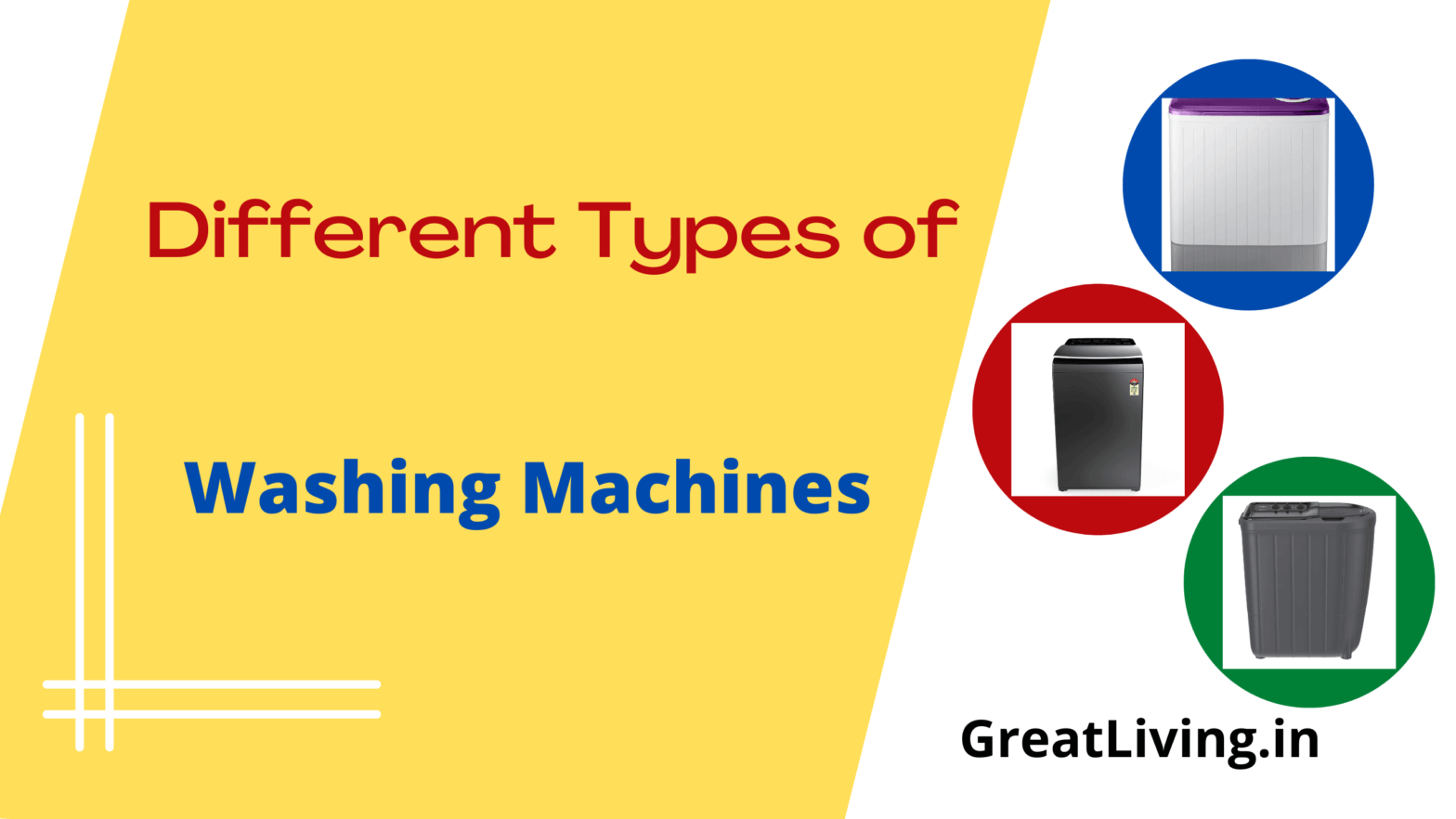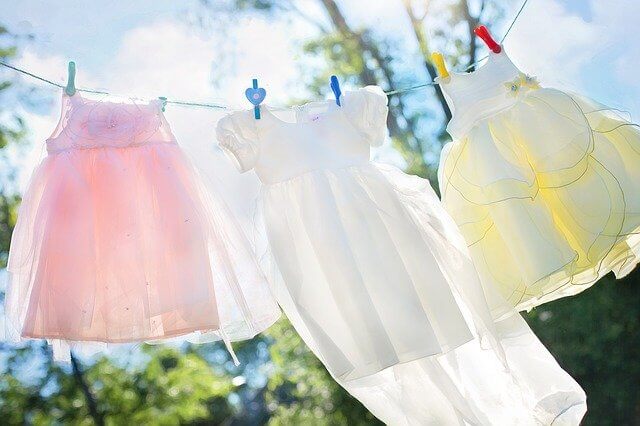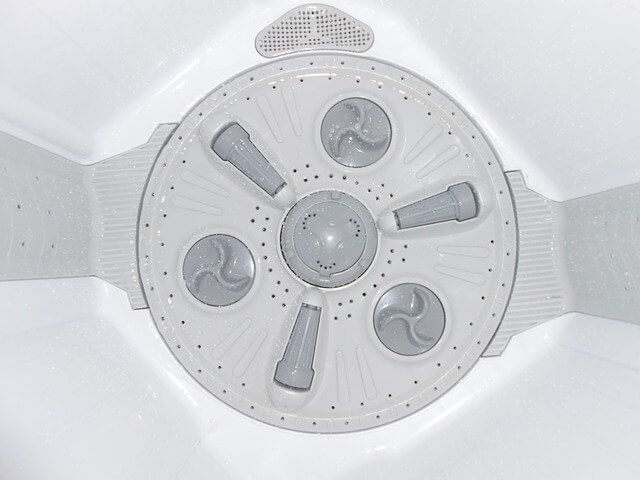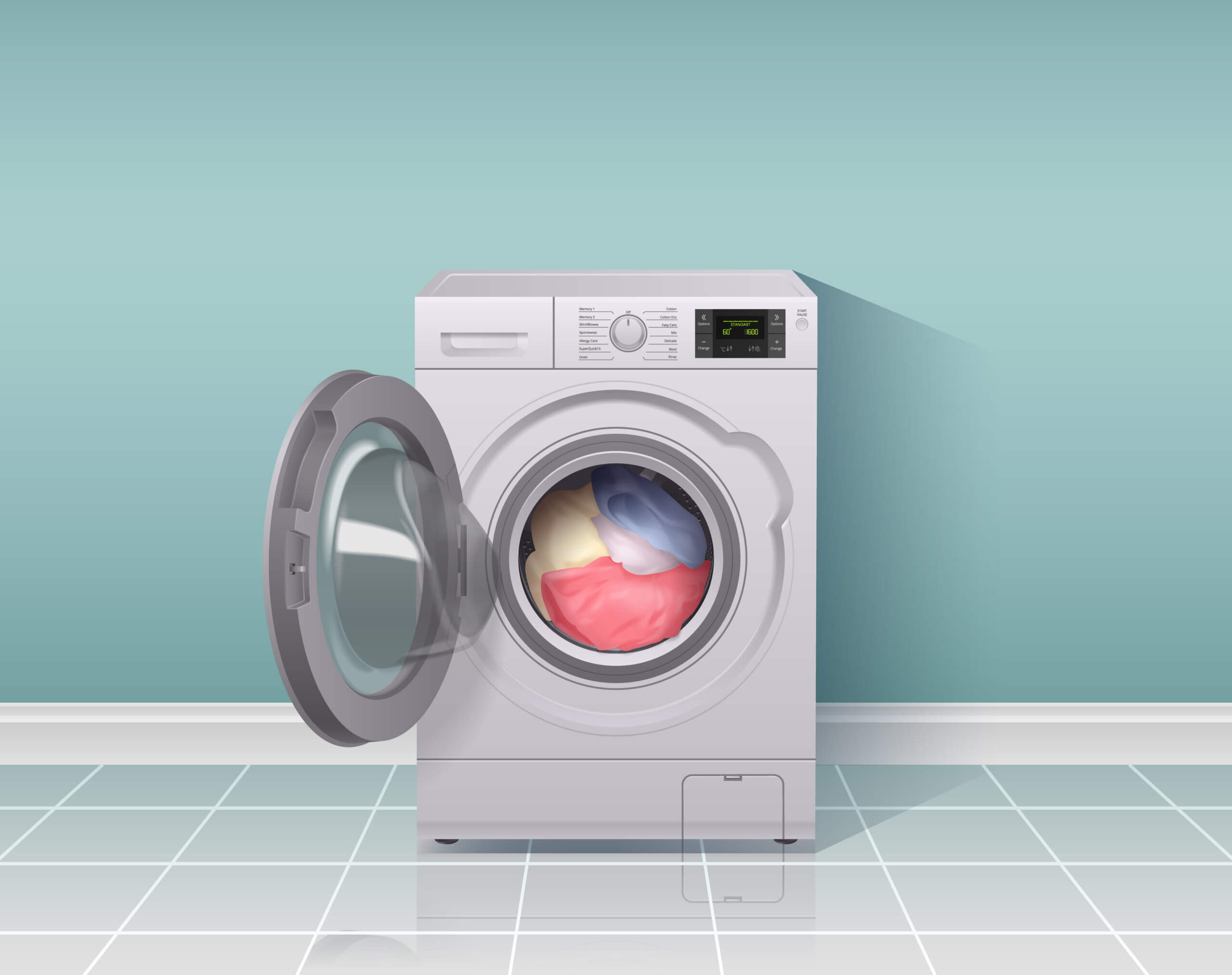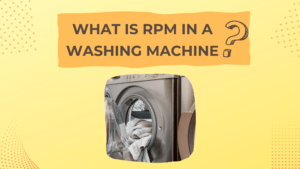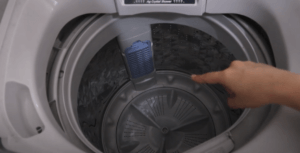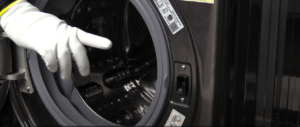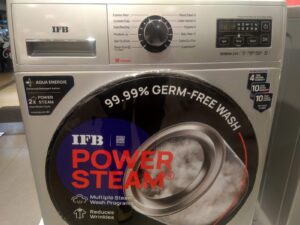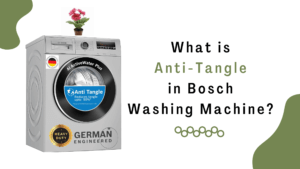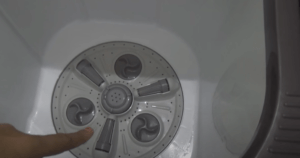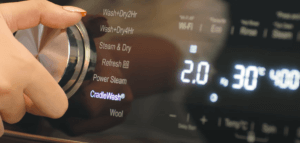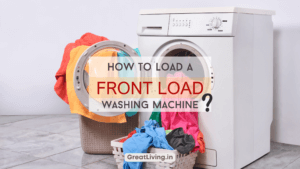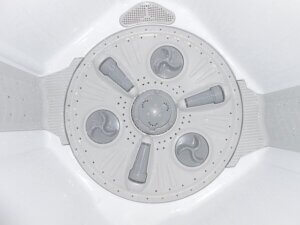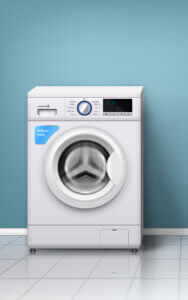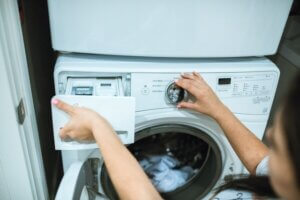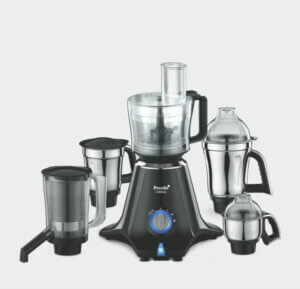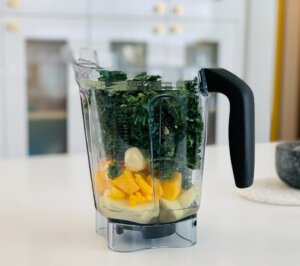Washing machines are an integral part of any modern home. They help you keep your clothes clean and fresh, and make your lives a lot easier. But how do they work? And what are the different types of washing machines out there?
We’ll explore them all and will also explain the benefits & drawbacks of each type of washing machine.
Want more? We’ll also take you through the different features to be considered while buying a washing machine.
So, if you’re in the market for a new washing machine, read on!
- Different Types of washing machines
- What is a Semi-automatic washing machine?
- What is a Fully-automatic washing machine?
- What is a Top Load washing machine?
- What is a Front Load washing machine?
- What are the different features to be considered while buying a washing machine?
- How to wash clothes in washing machine?
Different Types of washing machines
In India, the commonly used washing machines are available in two primary variants –
- Semi-automatic washing machine, and
- Fully-automatic washing machine
The Semi-automatic washing machine models are available only as Top Loader.
However, the fully-automatic washing machines are available as

WHAT’S YOUR CHOICE?
What is a Semi-automatic washing machine?
A semi-automatic washing machine has got two separate drums – one each for washing and drying.
The clothes are washed in the wash drum.
Once the wash cycle is complete, you’ll have to manually shift the clothes to the spin drum for rinsing and drying.
However, the functioning of a semi-automatic washing machine is not fully automated.
It requires your manual intervention in filling the required amount of water at different stages and even draining it.
Also, you’ll be required to manually transfer the clothes from the wash tub to the spin tub for rinsing and drying.
Hence the name ‘semi-automatic’ washing machine.
The semi-automatic machines are available as top-loading models only. However, they are simply referred to as semi-automatic washing machines.
You have got the option to select from the different wash programs like Normal, Delicate & Heavy depending upon the type of clothes that you want to wash together.
How to Use Semi-automatic washing machine?
Wondering how to wash clothes in semi-automatic washing machine?
You begin by loading the laundry in the Wash Tub.
And this is followed by feeding the detergent tray with the right quantity of detergent and additive.
Next, you’ll need to fill the wash tub with water after adjusting the water inlet switch.
After you fill in the requisite amount of water, you’ll have to switch the washing machine ‘ON’.
And there it goes!
The washing machine will start the washing process.
The time taken by your washing machine to wash the clothes will depend on the wash program selected by you.
Typically, it varies between 10 and 30 minutes.
And after the wash cycle is complete, the process would stop.
Rinsing and drying process
Now is the time to manually transfer the washed clothes into the spinning drum for rinsing and drying.
Just start the spinning process and let it complete.
However, please keep in mind that the rinsing process requires water. As such, you’ll have to take care of the water inflow during the stage when your clothes are rinsing.
And once the clothes are rinsed, you’ll need to stop the water inflow to let the clothes dry in the same drum.
The process of rinsing and drying normally takes from 10 to 20 minutes as per the laundry load.
Benefits of Semi-automatic washing machine
- Less expensive than a fully automatic machine.
- Washing doesn’t require a continuous flow of water; only rinsing does.
- You can stop the machine at any time and add more clothes.
- Weighs less than a fully automatic washing machine.
Drawbacks of Semi-automatic washing machine
- It is not fully automated.
- Clothes need to be shifted from the wash tub to the rinse tub manually.
- The inflow and outflow of water also need to be regulated manually.
- The wash quality is not as efficient as a fully automatic machine.
- Needs more storage space than a fully automatic washing machine.
EXPLORE NOW
What is a Fully-automatic washing machine?
Unlike the semi-automatic washing machine, a Fully-automatic has a single drum i.e. a common drum for washing and rinsing as well as drying.
In other words, it does not require your manual intervention because you’ll not have to shift the clothes from the wash drum to the rinse drum.
Even the requisite amount of water is drawn by the washing machine on its own at different stages of the wash cycle.
And this is done using its pre-programmed function.
The complete wash cycle is fully automated, without the need for any manual intervention by you.
Hence, these machines are called fully-automatic washing machines.
The fully-automatic washing machine is available in two variants:
- Top load washing machine, and
- Front load washing machine.
What is a Top Load washing machine?
The top-load washing machine is a variant of the fully automatic washing machine.
As the name suggests, you need to load the laundry from the top. This is similar to what you do in a semi-automatic washing machine.
However, the top load washing machine has got a single drum meant for both – washing as well as for rinsing & drying.
And the entire wash cycle is automated.
You just have to select the wash program and the washing machine completes the entire washing cycle on its own.
How to use Top Load washing machine?
Wondering how to use top load washer?
A top-load washing machine is really easy to use!
Just follow the steps below.
The first step is to load the laundry into the washing machine.
This is followed by putting the detergent and additive in the detergent tray.
Next, you need to select the wash program depending on your laundry load.
Most top-load washing machines have separate programs for washing different types of laundry loads. The different programs include the ones like Quick Wash, Cotton, Delicate, Wool, and Jeans.
You need to switch the machine ‘ON’ after that.
Connecting the hose pipe to the water inlet jet is just a one-time job (done during the installation of your new machine).
Needless to say that you just need to ensure the availability of water to the water inlet hose for your washing machine to do its job perfectly.
And relax!
Your top-load washing machine does the entire work for you without you requiring to intervene or supervise.
Right from washing the clothes to rinsing and drying, your top load washing machine will follow the preprogrammed process.
And the result is clean and (almost) dry clothes.
Useful Tip
Always dry your clothes under the sun to rid them of microbes (bacteria etc.)
Benefits of Top Load washing machine
There are many advantages to using a top-load washing machine over a front-load washing machine. Here are four advantages:
- Top-load washing machines are typically cheaper than front-load washing machines.
- Top-load washing machines use less water than semi-automatic washing machines.
- Top-load washing machines are easier to use than semi-automatic washing machines.
- Most top-load washing machines allow you to add clothes in the middle of the wash cycle.
Drawbacks of Top Load washing machine
- Top-load washing machines are generally more expensive than their semi-automatic counterparts.
- Top-load washing machines are not as energy and water efficient as front-loaders.
- Top-load washing machines often have less capacity than front loaders, meaning you may have to do more loads to get your laundry done.
EXPLORE NOW
What is a Front Load washing machine?
Just like a top-load washing machine, the front-load washing machine is a variant of the fully-automatic washing machine.
You need to load your laundry from the front, hence the name ‘front load’.
Similar to the top load machine, the front load washing machine also has a single drum – common for washing as well as rinsing & drying.
And this machine functions automatically to complete the entire wash process, including rinsing and drying.
Depending on the type of clothes you want to wash, you just have to select the wash program.
Similar to the top load washing machines, the front load machine also comes with a host of programs like Cottons, Synthetics, Mix Load, Delicates/Silk, Wool, Drum Descale, Rinse, Spin/Drain, Sportswear, Jeans, Kidswear, Freshen-Up, Quick 15/30min to handle all types of the laundry load.
These wash programs vary from model to model.
How to use a Front Load washer?
Wondering how to operate a front-loader washing machine?
Well, a front-load washing machine is as easy to operate as a top-load washing machine.
You need to start by segregating the laundry load so that the clothes can be washed together using the same wash program like cottons, woollens etc. Then put them all in the washing machine.
Next, select the wash program and put detergent and additives in the respective tray.
Start the washing machine and go to sleep. 😴💤
Yes, you can even sleep while your front-load washing machine does your laundry.😂
And for your comfort, you can choose from the best front-load washing machine models that are not only efficient at washing clothes but also silent. 😍
Do explore them here.
The entire wash process is fully automated, your presence and intervention are not required.
You can, however, do other household chores if you aren’t sleepy. 😊
Benefits of Front Load washing machines
A front-load washing machine has several advantages over other types of washing machines.
Here are four advantages of front-load washing machines:
- Front-load washing machines offer the most variation in wash programs for different types of clothes.
- They use less water.
- They consume less energy.
- They are gentler on clothes.
- They have a larger capacity.
- They usually need less storage space.
Drawbacks of Front Load washing machines
- They can be more expensive than top load as well as semi-automatic washing machines.
- Wash cycles are often longer.
- They are usually heavier than the top loaders.
EXPLORE NOW
What are the different features to be considered while buying a washing machine?
When it comes to buying a washing machine, there are a few key features you should look for to ensure you’re getting the best possible product for your needs.
Here are 9 important features to consider when making your purchase:
Type
The first thing to consider while shortlisting your dream washing machine is its type i.e. whether you want to go for a fully-automatic washing machine or a semi-automatic one.
Fully-automatic machines usually cost a little more. However, they pay back in the long run as you save cost on water, electricity, and detergent. Plus, it’s a lot more convenient to use a fully-automatic washing machine.
However, as they say, it’s not always the case of “one-size-fits-all”. So, it’s absolutely your choice what you go for.
And if you decide to go with a fully-automatic one, you’ll have to further decide between front-load and top-load models.
Capacity
The capacity of a washing machine is measured in kilograms and indicates how much laundry it can hold. Be sure to choose a machine with a capacity that suits your needs – if you have a large family, for example, you’ll need a machine with a bigger capacity.
In case you missed it, we have got a complete article on how to decide your washing machine’s capacity. Read here.
Programs
Most washing machines come with a range of programs to suit different types of laundry.
Common programs include delicate, quick wash, and hand wash.
Be sure to choose a machine with programs that suit your needs.
Wash quality
The next important consideration would be the wash quality. This also varies according to the type and model.
Most users find the wash quality of front-load washing machines to be the most superior.
We have a dedicated article comparing semi-automatic washing machines with fully-automatic ones. Read here.
Spin speed
This is the speed at which the washing machine’s drum spins and is measured in revolutions per minute (rpm).
A higher spin speed means clothes will be dried more quickly, so if you’re looking to save time, choose a machine with a high spin speed.
Energy efficiency
Washing machines can vary considerably in terms of energy efficiency, so it’s worth considering this factor before you make your purchase.
Front-load washing machines are the most energy-efficient machines and are usually the most expensive, but they’ll save you money in the long run by using less energy.
Water efficiency
Like energy efficiency, water efficiency is something you should consider when choosing a washing machine.
The most water-efficient machines use less water, which is not only good for the environment but can also save you money on your water bill.
Noise
Washing machines can differ in terms of noise, so if you’re looking for a quiet machine, be sure to check the noise level before you make your purchase.
Here are some of the best front-load washing machines for you. The list also contains the quietest model. Find them here.
Price
Washing machines can vary widely in price, so it’s important to set a budget before you start shopping. Be sure to factor in the cost of energy and water when considering the price of the machine.
Warranty
Most washing machines come with a two to four-year warranty.
If you’re looking for a machine with a longer warranty, be sure to check before you make your purchase.
After-sale service
This is an important factor to consider. In case you require repair and service of your washing machine in the future, your experience should be a pleasant one.
The after-sale service provided by most of the renowned brands is usually good.
Reviews
Once you’ve narrowed down your choices, it’ll be wiser on your part to read online reviews before you make your final decision.
Reviews can give you an idea of a machine’s performance, durability, and user-friendliness.
Is a food processor the same as a grinder?
A food processor and a grinder are two different appliances that are often used in the kitchen for preparing food.
A food processor is a multi-purpose kitchen appliance that can chop, slice, shred, puree, and mix a variety of foods. It typically has a wide range of attachments and blades that allow it to perform a variety of tasks. Food processors are generally used for tasks that require a lot of chopping, such as dicing vegetables or grinding nuts.
A grinder, on the other hand, is a specific type of appliance that is designed specifically for grinding food items. This can include things like meats, grains, and spices. A grinder typically has a single blade or a set of blades that rotate at high speeds to grind the food into smaller pieces. Grinders are generally used for tasks that require a more fine or uniform consistency, such as making ground meat or grinding spices.
In summary, while a food processor can be used for grinding certain foods, it is not the same as a grinder. A food processor is a multi-purpose appliance that can perform a wide range of tasks, while a grinder is a specific appliance designed specifically for grinding food items.
Can I use a food processor instead of a grinder?
Yes, in some cases, a food processor can be used instead of a grinder. Food processors are multi-purpose kitchen appliances that can chop, slice, shred, puree, and mix a variety of foods. They typically have a wide range of attachments and blades that allow them to perform a variety of tasks, including grinding certain foods.
For example, a food processor can be used to grind nuts, seeds, and grains into a coarse or fine consistency, depending on the type of blade or attachment that is used. Some food processors also come with a grating or shredding attachment that can be used to finely grind or shred meats and cheeses.
However, it is important to note that while a food processor can be used to grind certain foods, it may not be as effective as a dedicated grinder for tasks that require a very fine consistency or a large amount of grinding. Grinders are specifically designed for grinding and are generally more powerful and efficient at grinding food items than food processors.
In summary, a food processor can be used instead of a grinder for certain tasks, but it may not be as effective for tasks that require a very fine consistency or a large amount of grinding.
How to wash clothes in washing machine?
To wash clothes in a washing machine, follow these steps:
- Sort your clothes: Sort your clothes by color, fabric type, and level of soiling. Avoid washing clothes with heavy stains or soiling with lighter-colored items to prevent color bleeding.
- Choose the right detergent: Choose a detergent that is appropriate for the type of clothes you are washing. Follow the manufacturer’s instructions for the correct amount of detergent to use.
- Load the machine: Place the sorted clothes into the washing machine, making sure not to overfill it. Avoid packing the clothes too tightly, as this can prevent the water and detergent from reaching all of the clothes.
- Select the wash cycle: Choose the appropriate wash cycle for the clothes you are washing. Options may include normal, delicate, or heavy.
- Add additive: If you need to use bleach or fabric softener, add it to the machine according to the manufacturer’s instructions.
- Start the machine: Close the door of the washing machine and press the start button. The machine will begin to fill with water and the wash cycle will begin.
- Remove the clothes: Once the wash cycle is complete, remove the clothes from the machine and transfer them to the dryer or hang them up to dry.
It is also important to regularly clean and maintain your washing machine to ensure it is functioning properly. This may include cleaning the detergent dispenser and the inside of the machine, as well as checking and replacing the hoses and seals as needed.
WHAT’S YOUR CHOICE?
Trending Now
- What Is RPM in a Washing Machine?
- Why Front Load Washing Machines Are Expensive?
- How to Clean a Top Loader Washing Machine?
- How to Clean an LG Front Loading Washing Machine?
- What is Front Load Washing Machine?
- What is Anti-Tangle in Bosch Washing Machine?
- Do Impeller Washers Tangle Clothes?
- What Is Pulsator in Washing Machine?
- What is Cradle Wash in IFB Washing Machine?
- How To Load a Front Load Washing Machine?
- Best Semi Automatic Washing Machine in India
- Best Front Load Washing Machine in India 2023
- Best Impeller Top Load Washer in India 2023
- How Much Water does Front Load Washing Machine Use?
- How to use Front Load Washing Machine? India 2023
- Front Load Washing Machine Buying Guide – India – 2023
- Which Washing Machine is better – Semi or Fully Automatic in 2025?
- How to Select Washing Machine Capacity in 2023?
- Pros and Cons of Top Load and Front Load Washing Machines India 2023
- Difference between Top Load and Front Load – India (2023)?
You may also like to Read
